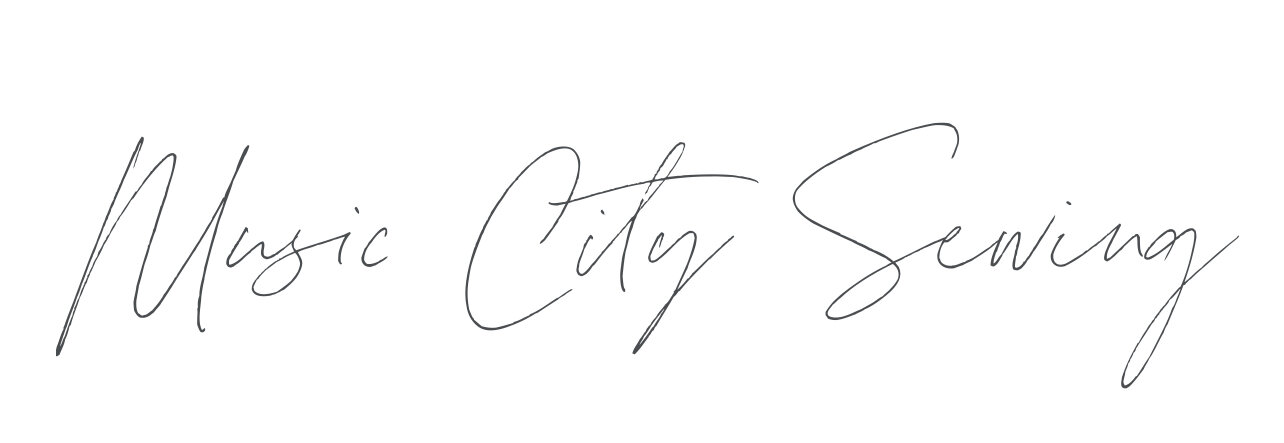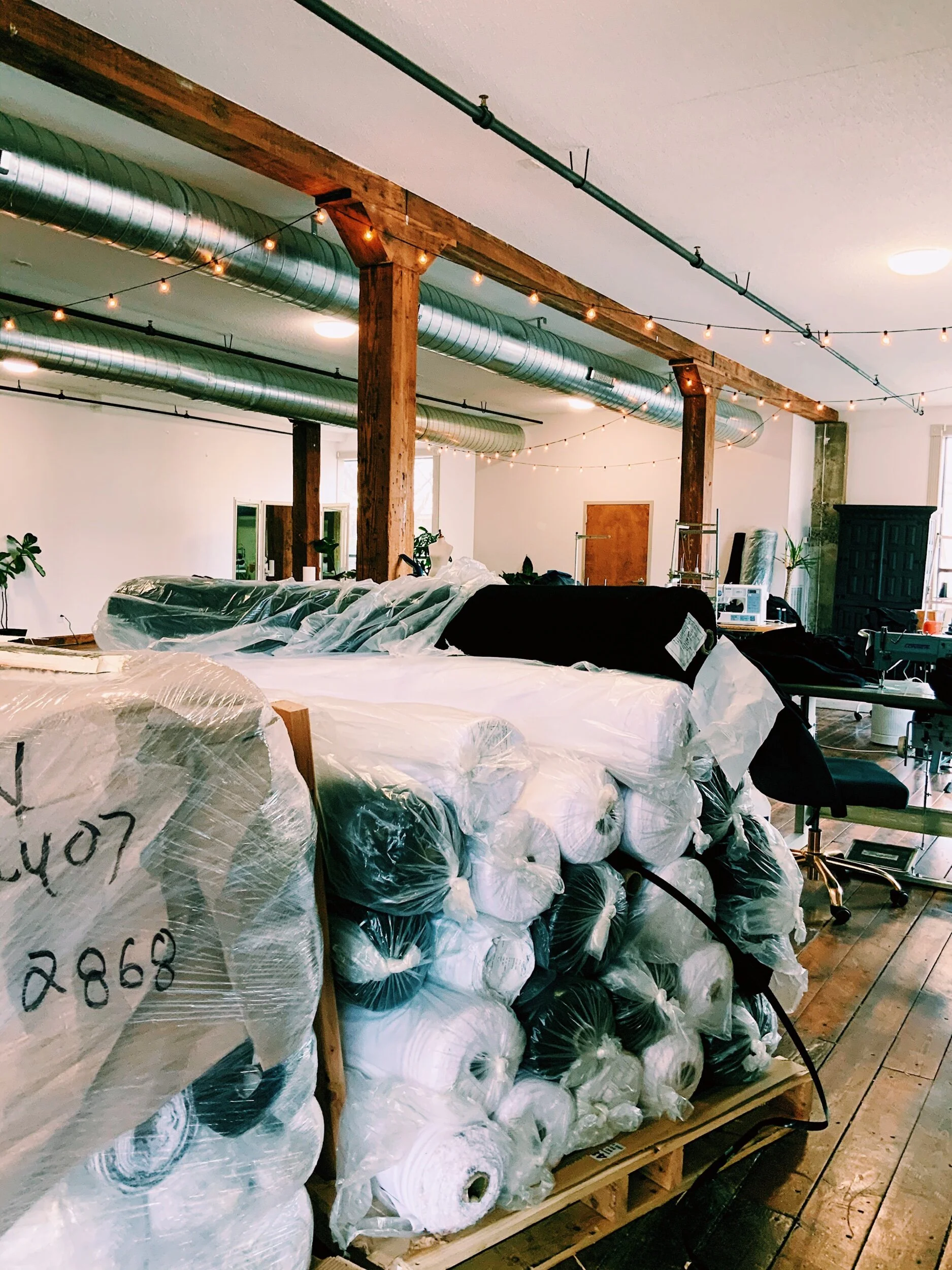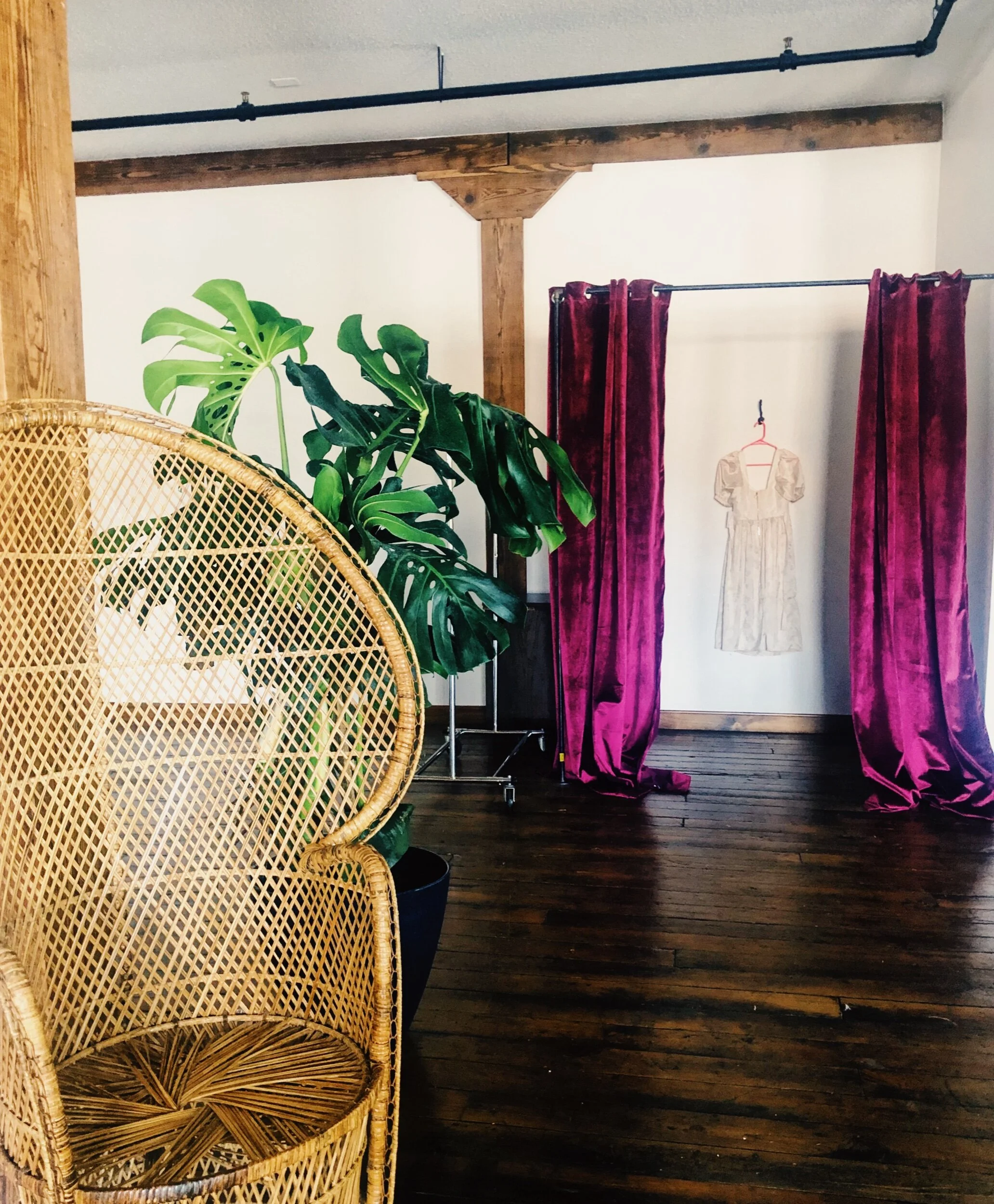Interested in hearing this blog in podcast form? Click here.
Navigating a small business throughout the past year comes with a lot of retrospect. I’d be lying if I didn’t tell you that the fourth year, 2021, wasn’t the hardest year yet - but here we are, a strong, precocious four-year-old, growing faster than I can keep up most of the time and bursting at the seams.
This week marked four years in business… while it feels like 40, I made a list of four things I’ve learned about launching and growing a sewing company in four years.
From the start, we’ve done alterations, products, softgoods, tailoring, costumes, face masks, merchandise, and small batch manufacturing. I’ve learned what works in terms of client communication, customer service, quality control, scaling, hiring, firing, expanding workspaces, shipping/freight, marketing, and the differences between service-based and product-based sewing.
On March 1, 2020, I signed a new commercial lease for MCS that essentially quadrupled our overhead. On March 11th, we lost all our contracts for work for the year and were promised zero work to do and zero income, since 100% of our income relied on the entertainment industry, and everything was cancelled for the year.
So mid-2020 to mid-2021 was our fourth year in business packed more lessons than any previous year, and it was truly a season of real entrepreneurship - not like the economy was behaving before. It was ruthless and intense, and every decision I made had a direct effect on someone’s (or everyone’s) livelihood, and would either breathe life into, or extinguish the business altogether.
Four years in and I’m just now starting to figure a few things out. So here they are, my top four.
Structure your work for help.
You’ll need to need people in order to be profitable. And you’ll need to generate enough work to feed them all. No matter how scrappy you get on cutting costs and keeping overheads low (which is easy to do in sewing- after all, seamstresses have a superpower in frugality!), you’ll never truly drive your bottom line without growing the business to a size that requires a team.
A sewing studio requires industrial equipment, which is expensive and bulky. You’re going to need raw, open square footage. You can’t lone wolf it and make it - not unless you end up salaried in the back of a theatre somewhere (this is the goal for many, it just wasn’t for me). You either have to go specialty, or you have to go volume.
I learned in the middle of the pandemic that I could either support myself and maybe an assistant… or we could kick a**, launch a new division, and increase monthly revenues by 400%. With a pandemic going on, I chose the option that created the most jobs - even if it meant I was shorthanded and exhausted from time to time (aka all of 2021, after navigating the aftermath of 2020).
Budget for mistakes.
You might think your skills are crushing, but give it time. People get tired. They forget to check their work before they send it down the line. You’ll make a dumb mistake somewhere.
Humans tend to batch their mistakes, multiplying the time spent fixing things. Whether you pay hourly or per unit, either way, it’s going to require time, which, if you’re a business owner, you know is also money. If your project has 2 mistakes, congratulations, you’re a month behind.. which means, your rent overhead has doubled for the span of your project.
In a recent project, one simple honest mistake cost us 82 hours. That’s two full weeks of work for a full-time employee to undo and redo the garment correctly. All because we skipped a step and didn’t pin one section of a garment in place, and wouldn’t you believe, that knit sneakily stretched on us. If you’re estimating out a project, buffer it by 20% no matter the type of project to ensure that you have time to move backwards… then say a prayer you’re wrong and finish early!
Document > Create
Documenting is 40% of the job and 90% of the marketing content. In the beginning, I had no help and no free time. But the little bits of sharing I did in terms of social media grew my biz by leaps and bounds. And when things finally grew large enough to hire one person… then two… my systems were already in place, and my new hires could simply follow that documentation.
I think when people first get started, they’re exhausted at the idea of creating unlimited content to market their hustle. I so get that - I mean who has the time!? The secret instead is in documentation. Rather than feeling the need to create unique, creative, contextual content, focus on documenting the experience of starting, running, and growing your craft-based business.
I think you’d be floored when you notice the business gaining more and more traction as you go, rather than remaining quiet until you have something you’re proud of.
Be patient and keep showing up.
You’re going to get your teeth knocked in.. it’s part of it. You cant avoid that part of the journey, no one is going to do it for you and no one is coming to save you. You have to keep going. It’s gonna get rocky, you’re gonna run out of cash, you’re gonna have influxes of cash and be tempted to invest in more equipment or workers or whatever, but just. be. patient. Sit still and calculate every move. All businesses have seasons just like trees. You have a rooting season, where no one sees you killing yourself to grow those roots you’ll need later. You’ll grow and sprout leaves and people will start to notice, and pretty soon you’ll have a fruiting & harvest season and everyone will say “wow! Look at y9ur overnight success!” And you’ll patiently keep going.
You’ll reach a discomfort after pruning, and you need to remember that your willingness to be patient through the discomfort will set you apart in the next harvest. Keep showing up, even if someone comes along and steals your crop. Keep showing up, even if no one notices the work you’re putting in (even your employees), and keep showing up after everyone notices what you just pulled off. Patience is everything.
So there you have it! Four pieces of advice I can adamantly give after four years in business… with that fourth year being navigating a global pandemic while quadrupling my overhead. If you have any thoughts on these, or would like to add, feel free to comment your thoughts below!




